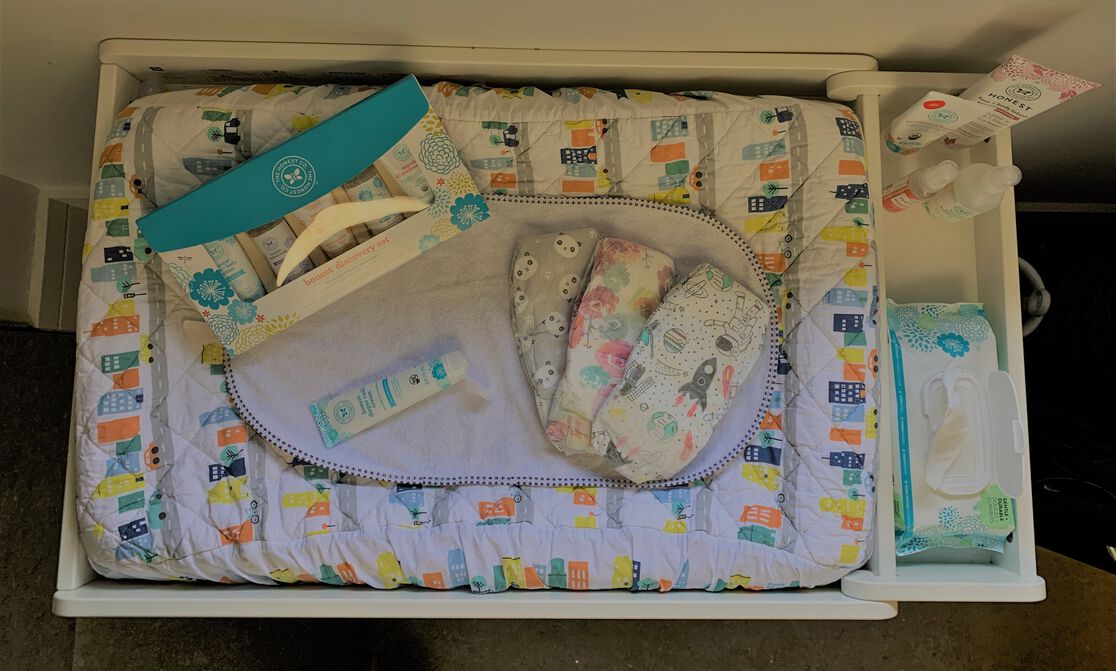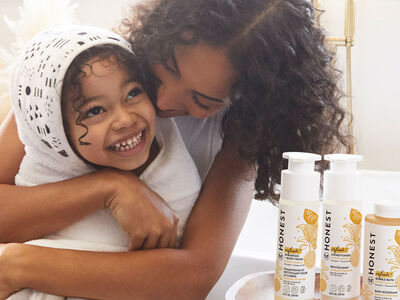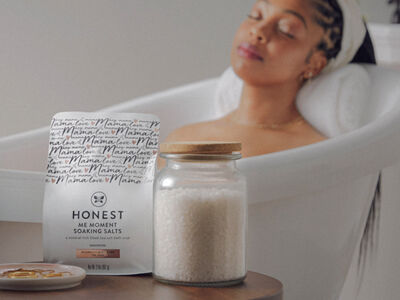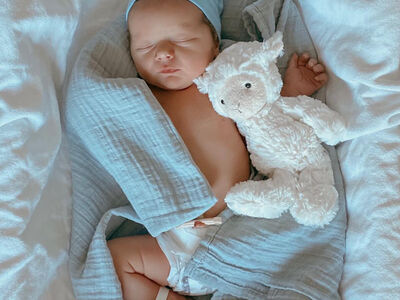The soft touch of a baby’s delicate skin is unbeatable, but sadly, it can’t stay that way forever, especially when there are so many environmental factors to consider. Baby rashes are caused by different sources and can be a literal pain for your baby to experience. They creep up unexpectedly and are caused by everything from chafed skin to changing temperatures to everyday baby drooling.
In some cases, they’re unavoidable. However, there are plenty of ways to prevent rashes. For example, ensure your baby is as protected as possible found in everyday items, such as a baby diaper. By, it can help keep your baby’s sensitive skin soft and rash-free.
Additionally, knowing the types of common baby rashes, where and why they happen, and how to treat a rash effectively will give you a better peace of mind to handle things right away. Rashes aren’t fun for anyone, but fortunately, they tend to go away quickly, especially if you’re proactive with care. Help relieve of rashes with these simple, at-home remedies.
Diaper Rash
Diaper rash is one of the most common types of rashes for babies and can be caused by an allergic reaction to diapers amongst other things like: chafed skin, diaper allergy, or a bacterial or yeast infection. Any of these top triggers leave the skin red, itchy, and raw. It affects the legs, buttocks, and genital area, as well as the creases in the skin. Diaper rash may show up as larger, red patches or tinier red dots, depending on where the irritation is located and how severe it is.
Specifically, chafing occurs when material rubs against the skin too frequently or too tightly, causing redness and irritation. A diaper allergy often occurs due to synthetic or toxic materials found in diapers that cause your baby’s skin to break out. If this has happened to your baby, consider disposing of those diapers and trying a non-toxic brand. This allergy can also be the result of the type of baby wipes or cloths you use during diaper changes. Finally, an infection settles in when the area is too moist and breeds bacteria or yeast. Infection happens if diapers aren’t changed frequently enough or if the area is left damp instead of completely dry.
Baby Rash Remedies: Thoroughly wipe down the skin when changing diapers and allow it to completely dry. If possible, allow your baby to hang out without a diaper on for a few minutes. The air will feel good against the skin and will naturally help with the drying process. Apply a generous amount of diaper rash cream to the affected areas and securely fit the new diaper, making sure it doesn’t cut into the skin.
Tip: Avoid using diaper rash creams or lotions that contain alcohol or fragrance. These aggravate the skin. Our Diaper Rash Cream has soothing ingredients like shea butter and jojoba and coconut oils for natural relief, in addition to zinc oxide to help protect the baby’s skin and seal in moisture. Also, our Honest Diapers are a hypoallergenicn eco-friendly solution that doesn’t contain latex, chlorine processing, or fragrances, all of which are common skin irritants.
Heat Rash
A heat rash can occur on any part of the body. It’s caused by blocked sweat ducts trapped underneath the skin as a result of hot temperatures. Babies who are outside in the sun for too long without shade can suffer from heat rash and other symptoms of being overheated. Symptoms include flushed skin, tiny skin bumps, and skin that’s warm to the touch.
Whenever you take your baby outdoors, make sure they’re covered with a hat and shielded with a light cover or blanket. A baby’s sensitive skin isn’t made to withstand the harsh UV rays from the sun. Apply sunscreen regularly and take cover underneath an umbrella. Possibly sit near a water mister and take make sure to take breaks to get out of the sun. If it’s available, try to sit near a water mister and take breaks to get out of the sun.
Baby Rash Remedies: Immediately take your baby indoors. Apply a cool, damp washcloth to their skin to slowly alleviate the heat or sit them in a water bath. If it’s a mild rash, it should go away on its own once the body temperature is regulated. However, if your baby develops a fever or other symptoms, talk to your doctor immediately.
Tip: Go for cool, not cold, water when bringing down the temperature of your baby’s skin. Coldwater may be too much of a shock to their system. When spending time outdoors, head to shady areas, and constantly check for changes to their skin by both look and feel. Even if their skin doesn’t look flushed, their internal temperature may be high due to extended heat exposure.
Drool Rash
It’s common for babies to develop “drool rash” around their mouth as a result of friction from sucking on their pacifier or thumb. It appears in a ring around the edges of their lips and often continues down the chin. As they begin to teethe and develop their salivary glands, increased drooling is inevitable, but drool rash is something parents can keep an eye on and limit from recurring or becoming worse.
If you’re wondering how to treat a rash like this, there’s no specific prescription since it typically clears up on its own within a few weeks. Keep your baby’s face as clean and dry as possible, wipe excess drool, and try to minimize time with the pacifier as much as possible to prevent additional flare-ups.
Baby Rash Remedies: This type of rash normally goes away on its own but clean your baby’s face with warm water and gentle soap to keep the area as clean as possible. Apply a fragrance-free baby cream to help soothe the skin as the rash heals.
Tip: Pat around the area with a clean cloth rather than scrubbing it. Even though it often looks worse than it is, it can still be irritating and painful for your baby. A drooling baby is nothing new, so the goal here is to keep them as comfortable as possible.
Eczema and Baby Acne
Although neither eczema nor baby acne is technically a rash, it can take on similar symptoms: redness, raised bumps, and dry itchy skin. Eczema often appears on a baby’s head and cheeks in patches of red and/or flaky skin. If it’s scratched too much, it can bleed and create an infection. This skin condition is a result of extra dry skin and environmental triggers. In some cases, it’s genetic or a result of an immune system problem.
Baby acne typically pops up in the earliest weeks of life and goes away on its own. It appears as tiny pustules across the face and is the result of the mother’s hormones and the baby’s sensitive skin. If either skin condition arises, do not scratch or pick at the blemishes or dry areas. Instead, use a gentle soap to cleanse the area daily and refrain from using scented lotions to treat the problem.
Baby Rash Remedies: In addition to cleaning the area, see a doctor if your baby has eczema. Since it’s not considered a rash, a topical prescription may be necessary to treat it long-term. Baby acne will likely go away on its own, but bring it up at your next doctor’s appointment if you’re concerned or if the area has worsened.
Tip: Take care of what you apply to your baby’s sensitive skin. It may cause an allergic reaction or further irritate a skin condition if it has certain ingredients in it, like alcohol or chlorine. Save the alcohol wipes for cleaning and disinfecting, NOT for baby’s bum. Both our Eczema Cream and Eczema Soothing Therapy Balm contain prebiotics and naturally-derived ingredients like colloidal oatmeal to temporarily protect and help relieve minor skin irritation.
Preventing Baby Rashes
Baby rashes of all kinds can spring up when you’re least expecting it. Fortunately, there are ways to help prevent breakouts from occurring, such as:
-
Keeping the skin clean and dry with frequent diaper changes and quick wipe-downs with a washcloth.
-
Dressing your baby in breathable fabrics that don’t rub against the skin or prohibit natural movement.
-
Choosing products with naturally-derived ingredients made withoutcfragrances, dyes, and other ingredients that can irritate the skin.
-
Monitoring all skin changes, however minor, to prevent them from worsening or being prolonged.
Prevention is key, but in some cases, rashes are unavoidable. In general, keep your baby as cool and comfortable as possible. Be specific with others about what kind of products to use and alert temporary caregivers to any allergies your baby has experienced. By being proactive, it can limit the number and severity of rashes.
It can be troubling to see rashes appear on your baby’s skin, but in most cases, it’s only natural and never last for too long. As your baby becomes exposed to more environmental changes, the skin will be affected and react accordingly. By being able to identify the different types of rashes that can occur and how to treat them, you’ll feel more prepared to get rid of whatever may come your way.
Sources: Mayo Clinic; https://www.healthline.com/health/how-to-spot-and-take-care-of-your-babys-rash#signs-to-see-a-doctor;
We aim to provide you with the most honest and credible information possible. This article was reviewed for accuracy by The Honest Team and was written based on trusted sources that are linked at the bottom of the article.
blog_review_statement



